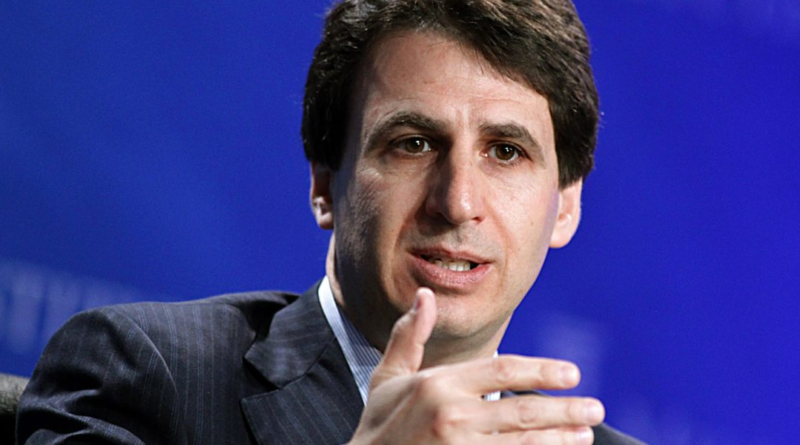The CEO of a massive private equity firm says he knows exactly what's going on with the 'non-recession' recession we're having right now
Investors have been warning about a recession for over a year now, but 14 months after the Federal Reserve began tightening its grip on the economy and raising interest rates, employment is higher than ever and wages are still going up. All the rules say the U.S. is supposed to be in a downturn right now, but most Americans aren’t feeling one. That may be because this is a different type of recession than the one economists are used to, according to Marc Rowan, billionaire investor and CEO of Apollo Management, a private equity firm with over $500 billion under management.
Even though wage increases over the past year have struggled to keep up with inflation, young workers and low-income households have seen the biggest nominal pay raises in a tight labor market. Meanwhile, people who own assets, who are more likely to be middle-class or wealthy, are more likely to notice an impact, Rowan said in an interview with CNBC this week.
“Asset prices are coming down,” Rowan said. “We in the financial markets who benefit and live in an asset world, we’re going to feel like we had a real recession. Rates went up—going up as much as they have, we’re going to feel it.”
The Fed’s interest rate hikes dealt a gut punch to stock markets in 2022, the worst year for Wall Street since the Great Recession, with the Nasdaq 100 shedding a third of its value and the S&P 500 down nearly 20% by the end of December. Stocks overall have rallied in 2023, but some investors have warned to stay away from more bear market traps, while specific sectors, like retail, have failed to post many significant gains. And U.S. households overall lost nearly $7 trillion in wealth in 2022, according to the Federal Reserve, largely due to the stock market’s nosedive.
But while it’s been a year of pain for asset holders, it’s worth remembering that not all Americans are monitoring their portfolios.
“Is most of our country going to feel like it’s a recession? Most of our country does not own assets in any significant way,” Rowan said.
In 2022, 58% of Americans owned stock—including individual stocks as well as retirement savings accounts—according to a Gallup poll from May of last year, a two-percentage-point increase from 2021. But looking more closely at the data reveals that the share of Americans who own stock decreases with income level. While 89% of households who make more than $100,000 annually had money invested in the stock market, that number fell to 61% for those making between $40,000 and $99,999. Only 25% of households earning less than $40,000 owned stock.
In addition to traditional stocks, higher-income households are also much more likely to participate in retirement investment plans, such as a 401(k), according to a 2022 Vanguard study, which found that while only 75% of eligible employees making under $50,000 contributed to a retirement plan, 96% of earners above $150,000 do.
For lower-income households, employment tends to be the primary factor in building wealth. And despite the Federal Reserve’s best efforts to slow down the economy and lower inflation, the labor market has been a major bright spot. On Friday, the Department of Labor announced that employers added 253,000 new jobs, and unemployment hit a 54-year low.
“Even if we have a recession in formal name, I doubt we’re going to have the kind of recession we’ve thought of historically with massive shifts in unemployment. I think we’re having a non-recession recession,” Rowan said.
The most prevalent asset owned by Americans in the bottom half of the country’s wealth distribution is home equity, or the net value of homeownership, according to the Congressional Budget Office, while wealthier Americans tended to be invested in other financial assets, including stocks and retirement assets.
The CBO said the asset class’s fast-paced growth over the past few decades is a driving factor behind widening wealth inequality in the U.S., as the net worth of higher-income households has soared while wealth growth elsewhere stagnated. Incomes for the top 10% of earners more than doubled between 1971 and 2018, according to a study by CEPR, a European economic think tank, while middle-class earners saw their wealth rise by less than 40%, and lower-income households stalled completely.
Rowan said that the era of free money since 2008, when the U.S. printed $8 trillion, saw the value of most assets rise, while accruing more assets was encouraged by historically low interest rates, benefiting wealthier households. Those gains were maximized during the pandemic, when a flood of stimulus boosted stock markets that ended 2020 on a record high.
Now that the free money era is drawing to a close, low-income households are starting to see some gains that higher-income Americans aren’t, but given the wealthy’s massive head start, the wealth gap is unlikely to close anytime soon.


